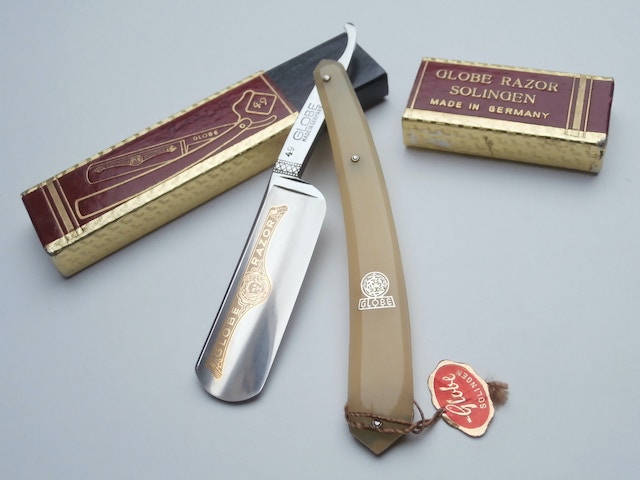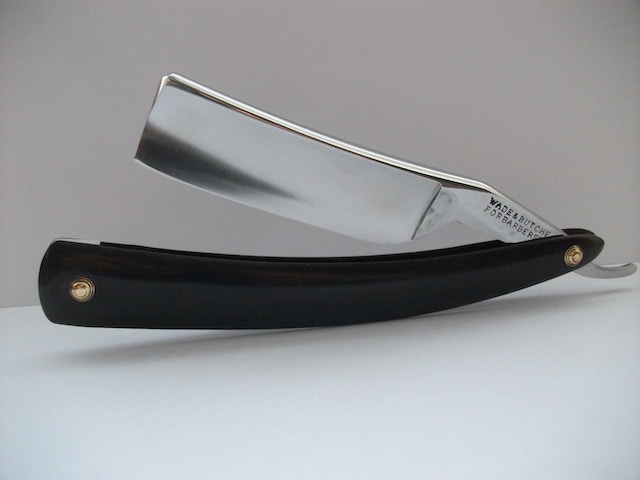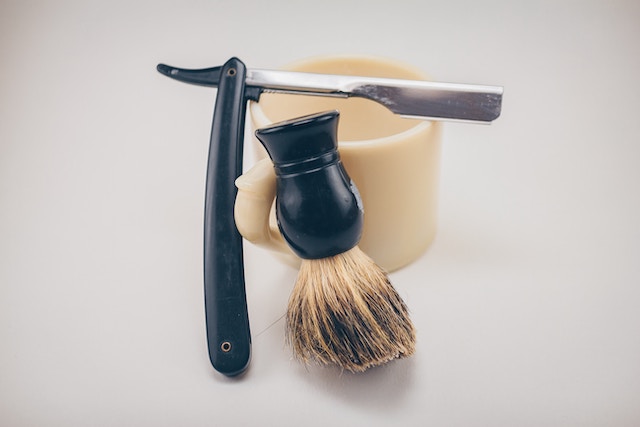Shaving is an essential part of many people’s daily grooming routine. While modern safety razors have gained popularity in recent years, traditional tools like the cut throat razor continue to hold a special place in the hearts of wet shaving enthusiasts. In this article, we will explore the world of cut throat razors, their history, benefits, proper usage, maintenance tips, and more.
- What is a Cut Throat Razor?
- My recommendations
- History of Cut Throat Razors
- Benefits of Using a Cut Throat Razor
- How to Properly Use a Cut Throat Razor
- Tips for Maintaining a Cut Throat Razor
- Differences Between a Cut Throat Razor and Safety Razor
- Common Mistakes to Avoid
- Choosing the Right Cut Throat Razor
- Safety Precautions
- Conclusion
- Frequently Asked Questions
What is a Cut Throat Razor?
A cut throat razor, also known as a straight razor or open razor, is a shaving tool with a long, sharp blade that folds into its handle. It is a classic design that has been used for centuries to achieve a close and precise shave. The name “cut throat” originates from the potential danger of using such a sharp blade.
My recommendations
In case you’re seeking the top-notch cut throat razor options, allow me to present my three recommendations below.
Dovo is a well-known brand in the world of cut throat razors, and their straight razors are highly sought after by shaving enthusiasts. The Dovo Straight Razor is crafted with precision and attention to detail, utilizing high-quality materials for durability and a smooth shaving experience.
Ready to take your grooming game to the next level? Panther Surgical razor is here to help! Crafted with the highest quality materials, this razor will ensure you get a close and comfortable shave with fewer strokes and less irritation. Its smooth and sleek design makes for an effortless glide across your skin, giving you the perfect shave every time. Get ready for a perfectly groomed look with Panther Surgical razor!
If you’re looking to experiment with a more affordable option to gauge shaving control, I would suggest giving The Cambridge Cutthroat a try
History of Cut Throat Razors
Cut throat razors are not just another shaving tool, rather they have a rich history that extends back to ancient times. Early Egyptians relied on rudimentary sharpened flint for shaving. It was a messy and dangerous affair, but it was better than going around with a beard that just would not go away. As time passed, civilizations refined the design, and things became more sophisticated. The advent of metalworking meant that razors became more durable and effective, and the world of shaving underwent a revolution.
In the 19th century, the production of cut throat razors reached its peak, and men worldwide started using these razors. The popularity of cut throat razors was due to their effectiveness, efficiency and affordability. They were the tool of choice for many people because they gave the closest shave possible. Cut throat razors soon became symbols of manhood, power, and elegance, and men took great pride in having clean and smooth-shaven faces. The use of cut throat razors has never waned, and modern-day barbers still rely on these tools to give their clients an effortlessly smooth shave. Overall, the history of cut-throat razors is a rich and diverse one, and it is something that we should all be proud of.
Benefits of Using a Cut Throat Razor
Using a cut throat razor offers numerous benefits that set it apart from other shaving methods. Firstly, it provides an unparalleled level of closeness and precision. The sharp blade of a cut throat razor glides effortlessly across the skin, cutting the hair directly at the skin’s surface. This results in an incredibly smooth and long-lasting shave that leaves your skin feeling irresistibly soft.
One of the remarkable advantages of using a this razor is its eco-friendliness. Unlike disposable cartridges or blades used in modern razors, cut throat razors are built to last. By investing in a high-quality cut throat razor, you eliminate the constant need to purchase and dispose of plastic shaving accessories. This not only reduces your environmental impact but also saves you money in the long run.
Beyond the practical benefits, using a cut throat offers a sense of tradition and nostalgia that is cherished by many. The ritual of honing, stropping, and shaving with a cut throat razor is steeped in history and craftsmanship. It connects you to a bygone era when shaving was seen as an art form. The meticulous attention to detail and the skill required to wield a cut throat razor make the entire experience more personal and gratifying.
Furthermore, the use of a cut throat razor allows you to take full control of your shaving routine. With its single blade, you have a clear view of the contours of your face, enabling you to navigate tricky areas with precision. This level of control is particularly beneficial for individuals with sensitive skin or those prone to ingrown hairs. You can adapt the pressure and angle according to your unique needs, ensuring a comfortable and irritation-free shave.
Moreover, using a cut throat razor can be a meditative and mindful experience. The rhythmic sound of the blade against the strop, the careful application of lather, and the deliberate strokes on your face create a sense of focus and presence. It becomes a moment of self-care, allowing you to start your day with a sense of calm and rejuvenation.

How to Properly Use a Cut Throat Razor
Using a cut throat razor requires skill and practice. Here are the steps to achieve a successful shave:
- Preparing the skin: Start by washing your face with warm water to soften the hair and open the pores. Applying a pre-shave oil can further enhance the shaving experience.
- Preparing the razor: Unfold the razor carefully, ensuring the blade is sharp and in good condition. Strop the blade on a leather strop to further refine its sharpness.
- Building lather: Use a shaving brush to apply a rich lather of shaving cream or soap to your face, creating a protective barrier between the razor blade and your skin.
- Shaving technique: Hold the razor at a 30-degree angle against your skin. Begin with light, short strokes, allowing the weight of the razor to do the work. Always shave in the direction of hair growth to minimize irritation.
- Rinsing and finishing: Rinse the razor frequently under warm water to remove hair and shaving cream buildup. Once you have completed shaving, rinse your face with cold water to close the pores and apply a soothing aftershave balm or lotion.
Tips for Maintaining a Cut Throat Razor
Proper maintenance is essential to ensure the longevity and performance of your razor. Here are some tips:
- Drying and storage: After each use, rinse the razor thoroughly, dry it with a towel, and allow it to air dry completely. Store it in a dry place to prevent rust or damage.
- Regular honing and sharpening: Over time, the razor blade may lose its sharpness. Consider learning how to hone and sharpen the blade yourself or seek the services of a professional razor honer.
- Stropping: Regularly strop the blade before each use to realign the edge and maintain its sharpness. Use smooth, even strokes on a clean leather strop.

Differences Between a Cut Throat Razor and Safety Razor
While both cut throat razors and safety razors serve the purpose of shaving, they have distinct differences. Cut throat razors have a single, long blade that requires skill and technique to use effectively. On the other hand, safety razors feature a protective guard and use disposable blades, making them more beginner-friendly and convenient.
Common Mistakes to Avoid
When using a the razor, it’s important to avoid common mistakes that can lead to nicks, cuts, or an unsatisfactory shave. Here are a few mistakes to be aware of:
- Applying too much pressure: Let the weight of the razor do the work, applying minimal pressure to avoid cuts or irritation.
- Incorrect angle: Maintain a proper angle of approximately 30 degrees between the blade and your skin for an optimal shaving experience.
- Rushing the shave: Take your time and be patient. Shaving with a cut throat razor requires concentration and precision.

Choosing the Right Cut Throat Razor
Selecting the right cut throat razor can significantly impact your shaving experience. Consider the following factors:
- Blade material: Look for high-quality stainless steel or carbon steel blades known for their durability and sharpness.
- Blade size and shape: Different blade sizes and shapes offer varying levels of maneuverability and control. Experiment to find the one that suits your preferences.
- Handle material: Choose a handle material that provides a comfortable grip, such as wood, plastic, or metal.
Safety Precautions
Using a cut throat razor involves handling a sharp blade, so it’s important to prioritize safety. Follow these precautions:
- Proper handling: Hold the razor by the handle and avoid touching the blade with your fingers.
- Shaving in a well-lit area: Ensure adequate lighting to have better visibility and reduce the risk of accidents.
- Regular inspection: Check the razor blade for any signs of damage or dullness before each use. Replace or repair as necessary.
Conclusion
Cut throat razors offer a unique and traditional shaving experience that many enthusiasts cherish. With proper technique and maintenance, they can provide a close and satisfying shave. However, it’s important to approach the use of cut throat razors with caution and respect for the sharpness of the blade. By following the tips and guidelines outlined in this article, you can master the art of shaving with a cut throat razor and enjoy the benefits it offers.
If you’re eager to delve deeper into the topic and explore a comprehensive guide on how to use a cut throat razor, I highly recommend checking out this informative post on my blog: How to Use a Cut Throat Razor: A Comprehensive Guide. It provides step-by-step instructions, helpful tips, and valuable insights to help you navigate the art of shaving with a cut throat razor.
Remember, practice and patience are essential when it comes to mastering the art of shaving with a cut throat razor. With time, you’ll develop your own techniques and preferences, leading to a truly personalized and enjoyable shaving experience.

Frequently Asked Questions
- Q: Are cut throat razors suitable for beginners?
A: Cut throat razors require practice and skill, so they may not be ideal for beginners. However, with patience and proper technique, beginners can learn to use them effectively. - Q: How often do I need to sharpen a cut throat razor?
A: The frequency of sharpening depends on how often you use the razor and the quality of the blade. As a general guideline, sharpening every few months or when you notice a decline in performance is recommended. - Q: Can women use cut throat razors?
A: Yes, cut throat razors can be used by both men and women. They are particularly popular among individuals who prefer a close and precise shave. - Q: Can I travel with a cut throat razor?
A: Traveling with a cut throat razor requires careful packing and consideration of airline regulations. Ensure the blade is securely protected, and check the specific guidelines of your airline before traveling. - Q: Are there any specific techniques to avoid razor burn with a cut throat razor?
A: To prevent razor burn, ensure your skin is properly prepared with warm water and a good lather. Use light, gentle strokes, and avoid going over the same area repeatedly. Applying a soothing aftershave balm can also help reduce irritation.























